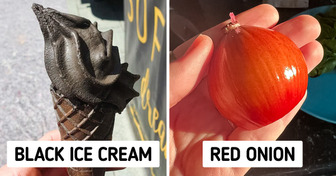How to Answer Uncomfortable Questions So That People Don’t Ask Them Again

According to surveys, the most popular wedding traditions are the groom having the best man, having the first dance as a newly-married couple, and the best man giving a speech. But besides these 3 things, there are many other wedding customs worth exploring and even incorporating into your ceremony.
We at Bright Side collected 12 wedding traditions from different countries around the world that are guaranteed to make any marriage ceremony more colorful.
As part of a ritual called the haldi ceremony, Indian brides and grooms are usually covered in a bright yellow turmeric paste before the wedding. The paste also includes oil and water, and married women are the ones who apply it to the happy couple, to bless and protect the pair. The bright yellow color of turmeric is also believed to bring prosperity to the couple’s marriage.
The money dance is a traditional wedding dance that can be seen in many different cultures, including Polish, Greek, Cuban and Mexican. Known as the dollar dance in the US, this tradition also took roots there because of the many immigrants who decided to honor the practice. There are many variations, like, for example, when each man dances with the bride and pins money on her, or when all the guests shower the newlyweds with dollar bills.
The Tujia people are an ethnic group in central China. Before the wedding ceremony, it’s customary for the bride to shed some tears to show that she’s reluctant to part with her family. What comes next is even more interesting, as the bride later starts singing crying songs. Those observing her judge her virtue and intelligence based on how well she can sing these songs.
This tradition is called the Siraman and usually takes place a couple of days before the wedding. The parents of the bride and the groom bathe them separately with flower water made from several different plants. The showering of the bridal couple is done to cleanse their spirits and prepare them for their next journey, marriage.
In the Democratic Republic of the Congo, marriage is considered serious business, and the bride and groom are discouraged from smiling during the whole event. This includes the ceremony, the reception, and even wedding photos. Smiling would imply that the couple is not serious about the marriage.
At the wedding reception, a Filipino couple releases a pair of white doves, symbolizing peace, prosperity, and happiness in their married life. The doves are kept in a nicely decorated cage before their release, and this cage is sometimes opened by pulling on a ribbon.
The groom’s best man, known as the Koumbaro, customarily shaves the husband-to-be on the morning of their wedding day to signify trust. Later, the groom’s close friends join too to help him get dressed for the big day. While the bride isn’t shaven, her friends help her get ready too.
After the newlyweds have said their I dos, the husband’s mother fills a ceramic bell with rice, flour, and other grains. Before allowing the couple to enter the house, the mother-in-law breaks the bell, which represents abundance and prosperity in their marriage.
One of the most common games at German weddings is the sawing of a log of wood. This represents the first challenge the newlyweds have to face as a married couple, as they have to cut a log in half together. Only after the wood is cut in half and confetti is tossed can the couple arrive at the reception.
Before the happy couple can get married at the ceremony, a baby is placed on their bed to boost their fertility. After they have said their I dos, it’s also customary to shower the bride and groom with rice, peas, and lentils, which all symbolize abundance.
The traditional headdress is called the Tsunokakushi, and it’s supposed to cover the bride’s wig styled in a high bun. The headpiece is made of white silk, matching the bride’s white kimono. Some people believe that the Tsunokakushi is worn to hide the bride’s “horns,” which symbolize jealousy and selfishness, so she can become a gentle wife during her marriage.
The night before the wedding, the husband-to-be organizes a serenade for the bride, with the help of his groomsmen. The serenade is supposed to be a surprise for the bride, so only other family members can know exactly when it will happen.
Did you keep any traditions at your wedding, or did you prefer to have a modern ceremony? Tell us in the comment section below.











